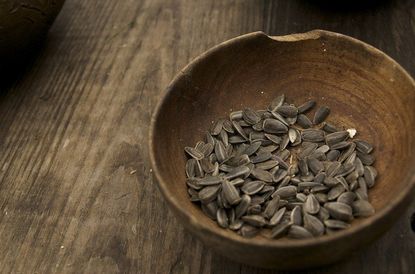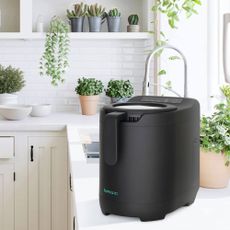Growing Sunflowers As Food


Sunflowers have a long tradition of being grown for food. Early Native Americans were among the first to grow sunflowers as a food source, and with good reason. Sunflowers are a source of all sorts of healthy fats, fiber, and vitamin E, not to mention that they just taste great.
Growing Sunflowers as Food
If you have decided to try growing sunflowers as food, there are a few things that you should keep in mind.
Choose the right kind when growing sunflowers for food
First, you need to choose the right kind of sunflower to grow. While there are now dozens of varieties of sunflowers to choose from, you should find one that is a confectionery sunflower seed or a non-oil seed. These tend to be the large black and white striped seeds. These are the tastiest seeds for human consumption. Some examples of confectionery sunflower seeds are:
- Russian Mammoth
- Paul Bunyan Hybrid
- Miriam
- Tarahumara
Choose the right spot when planting sunflowers for food
Next, you need to select a good place to grow your sunflowers. Sunflowers need plenty of sunlight, so make sure that the site you choose gets at least six to eight hours of sunlight a day. You also want to make sure that the place you choose has good drainage, but also has a soil structure that will retain some water as sunflowers need lots of water.
Sunflowers need lots of fertilizer
Sunflowers are also heavy feeders. Make sure the ground that you plant your sunflowers in has plenty of nutrients to support the sunflowers. If you are not sure that the place you have chosen has enough nutrients, amend the soil with either compost, well-composted manure, or fertilizer. Also, be aware that the sunflowers will deplete the soil they grow in. If you plan on growing anything else in that location (especially if you are growing the sunflowers in your vegetable garden), you will need to amend the soil after you have harvested your sunflowers.
How to Plant Sunflowers for Food
Plant your sunflower seeds directly into the ground right after the last frost date of your area. Be sure to keep the area weed-free until the sunflower grows tall enough to reach above any possible surrounding weeds. Letting weeds grow around seedling sunflowers could block the much-needed sunlight from the sunflower seedlings. Your sunflower seeds will be ready to harvest when the head turns down towards the ground. If you wish to double-check that your sunflower seeds are ready, simply remove one seed from the head and crack it open. The kernel inside should be plump and fill the whole shell. When your sunflower gets near to being ready to harvest, you may also wish to protect the head from birds and other animals that also find sunflower seeds tasty. To do this, cover the seed head in mesh or netting.
Gardening tips, videos, info and more delivered right to your inbox!
Sign up for the Gardening Know How newsletter today and receive a free download of our DIY eBook "Bring Your Garden Indoors: 13 DIY Projects For Fall And Winter".

Heather Rhoades founded Gardening Know How in 2007. She holds degrees from Cleveland State University and Northern Kentucky University. She is an avid gardener with a passion for community, and is a recipient of the Master Gardeners of Ohio Lifetime Achievement Award.
-
 Get Gardening For Better Sleep: Why Gardens And Plants Can Give You Happier Bedtimes
Get Gardening For Better Sleep: Why Gardens And Plants Can Give You Happier BedtimesWe all know gardening is intrinsically linked to a ‘feel good’ factor – have you ever wondered why it helps with rest? Here’s the thinking behind gardening for better sleep…
By Mary Ellen Ellis
-
 Electric Composter Guide: Are Countertop Food Recyclers The Future Of Sustainability?
Electric Composter Guide: Are Countertop Food Recyclers The Future Of Sustainability?Discover how electric composters work, their benefits and limitations – and whether they're worth the investment as a sustainable easy win.
By Melanie Griffiths